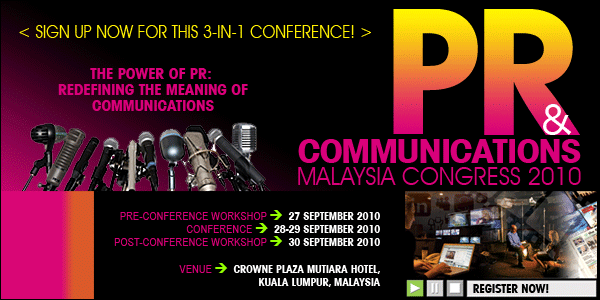- Category: July 2010
 A few years have passed by since the first solid ideas for mobile advertising in the context of WAP and MMS have been debated in the industry. Although a lot of mobile advertising campaigns have come to life so far, providing some very good case studies that demonstrate how it can be used successfully, mobile advertising has still a long way to go compared to Internet advertising, which already belongs to our daily life.
A few years have passed by since the first solid ideas for mobile advertising in the context of WAP and MMS have been debated in the industry. Although a lot of mobile advertising campaigns have come to life so far, providing some very good case studies that demonstrate how it can be used successfully, mobile advertising has still a long way to go compared to Internet advertising, which already belongs to our daily life.Upon investigation of various mobile advertising campaigns, the principles of success for all forms of advertising emerged, such as a clear definition of the objectives of the campaign or ensuring the measurability. Beyond that, there are mainly four specific factors that justify a successful mobile advertising campaign, which are:
- The overall customer acceptance
The currently still to some extend low consumer acceptance is based almost exclusively on the customer's perceived or feared intrusiveness of mobile advertising messages. Customers' trust, however, can be obtained in several ways and special incentives such as voucher or playful applications integrated in advertising can definitely increase the acceptance significantly on the consumer side, besides for instance offering ad-funded calling minutes and SMSs. - A clearly defined target group
Mobile advertising in general offers a great opportunity for precise targeting. Some necessary criteria are already known, through the use of mobile phones alone e.g. the phone type, and thus the functionality of the device (e.g. requirement for playing videos or running Java applications), user profiles through registration, and for instance as well the location of the customer. This allows that at the right time, at the most suitable place, the right information can be provided for the customer. Double-digit CTRs (Click Through Rates) are not uncommon for such targeted campaigns.
Some car manufacturers such as Range Rover, Ford or Hyundai already very regularly use mobile advertising banners in order to strengthen their brand and reach for their mobile campaigns average CTRs of up to nearly 10 percent. - The integration into a broad campaign
Mobile advertising campaigns are most successful when they are incorporated in a broad advertising campaign, supporting ideally the traditional advertising channels, as regardless of location, clients become accessible for advertisers now.
An example of such a successful integrated marketing campaign provides Dunkin 'Donuts. The company invited customers via print and broadcast advertising to send a code via SMS and got in return a link for a download voucher for a coffee. The whole campaign, which was running for two months, led to a turnover increase of 9 percent. This proves that campaigns that offer a reasonable value-add, by all means may have a measurable success for the advertiser.
Still, any campaign should consider that less is often more as sometimes a simple SMS is sufficient for registered users to distribute, for example, a link. For banner advertising short and concise information is most important and should be considered. - The adaptation of the message to the context of mobile phone usage
The mobile phone is valued as something very personal and therefore unwanted messages are perceived as harassment. As mobile advertising is exceptionally successful when customers are ready to interact and to reveal information about them, all market participants have to operate in a disciplined manner, including the definition of a framework and making sure that consumer confidence is not abused. Only then a solid and successful business model can be developed.
Mobile network operators have developed a close relationship with end users and can therefore manage advertising campaigns targeted according to certain criteria like demographics, location and mobile device type of the consumer.
They basically still pull the strings, as they control, besides the tariff rates, the data traffic as well. However, many advertising models are only useful if the customer does not have to pay for the data communication. Therefore, some mobile operators started to cooperate both with ad servers for placement of advertisements as well as with Internet companies for the provision of various applications - from search functions to exclusive music tracks of famous artists. A standardized business model, however, didn't become widely accepted yet and this implies in particular for mobile operators, Internet companies and handset manufacturers a huge growth potential.
As the off-portal Internet gains in importance, the traditional internet companies like Google or Yahoo, but also handset manufacturers such as e.g. Nokia, benefit increasingly.So the most important thing in this new competition is in particular, which supplier gains the trust of users and, above all, can keep it.
By Daniela La Marca




















